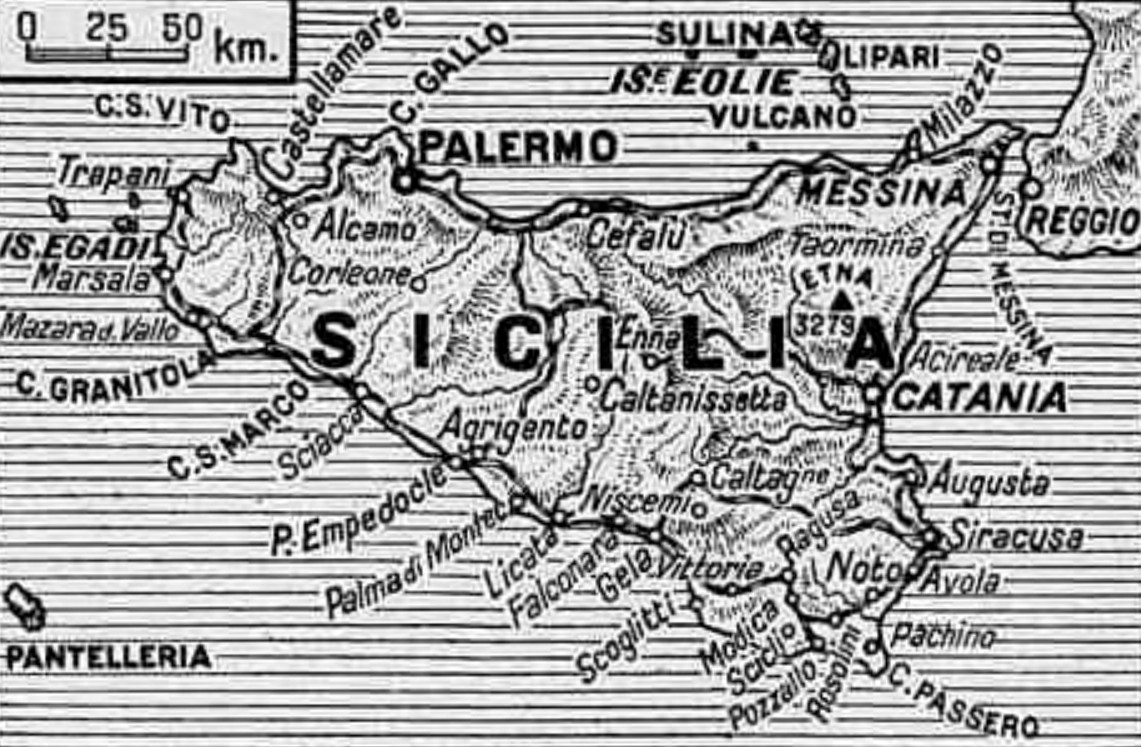Italian mainland blasted, 33 Axis planes shot down
By Virgil Pinkley, United Press staff writer
Allied HQ, North Africa – (July 17)
Allied warplanes, strangling Sicily’s supply lines and spearheading their way to ultimate invasion of the mainland, pounded five ports and airdromes in southern Italy nine times Thursday night and Friday and shot 33 planes from the ranks of stiffened Axis air resistance.
The latest blows gave the people of southern Italy new evidence of the Allies’ determination to bomb their way to victory if, as President Roosevelt and Prime Minister Churchill suggested Friday, they do not overthrow the Fascist regime and accept “honorable capitulation.”
Allied losses for all Africa-based operations were seven planes – three Liberators of the U.S. Middle Eastern 9th Air Force and four of the Northwest African Command.
The Italian communiqué said Allied planes flew over Rome Friday night dropping leaflets, presumably the Churchill-Roosevelt message to Italy.
Targets bombed in southern Italy were the airfield at Bari, at the top of the boot on the Adriatic, which was hit Friday by the Liberators; Crotone Airfield, struck Thursday night by Royal Air Force Liberators and Halifaxes of the Middle East and again by RAF Wellingtons of North Africa; Vibo Valentia, on the western side of the “boot,” twice Friday by U.S. medium bombers of North African and Thursday night by Wellingtons; Reggio di Calabria, ferry terminus for lines over to Sicily, Thursday night by Wellingtons, and San Giovanni, another ferry port, Friday by Flying Fortresses and Thursday night by Wellingtons.
Simultaneous with the increase in enemy fighter strength over Italy came the revelation here that Field Marshal Wolfram von Richthofen, one of the Luftwaffe’s top commanders, was in charge of Italian and German fighter planes in the southern Italian front.
The British radio reported the Axis had withdrawn all its bombers from southern Italian airfields and only maintained some fighters in Sicily. It said the Axis was prepared to write off Sicily as far as air protected was concerned. The Algiers radio said the devastating Allied air attacks had knocked out the Sicilian railway running between Messina, Palermo and Catania.
While the bombers worked on southern Italy, fighter-bombers, fighters and attack bombers kept their daily hammering of troops, trucks, supply depots, railroads and other facilities behind the lines in Sicily. They operated almost unmolested. Two of their biggest attacks were on the railyards of the central Sicilian town of Valguarnera and the important communication center of Randazzo, just north of Mt. Etna.
U.S. Mitchell medium bombers struck Valguarnera, hitting buildings near the railyards, one of which went up with a terrific roar.
The Fortresses gave San Giovanni one of its heaviest bombings of the war Friday, scoring at least 50 direct hits on a rail spur near the ferry terminus and laying waste eight acres of the city, including a barracks area. The Fortresses flew unescorted and went through accurate anti-aircraft fire to plant their bombs.
Paid back with interest
Lt. Gordon B. Olson, of Los Angeles, said:
They gave us hell with flak but we paid them back with interest.
Vibo Valentia was hit twice by daylight by Marauder and Mitchell medium bombers escorted by lightning fighters. They spread a destructive pattern of bombs through the center of the city and the airport from which Axis planes have been taking off in attempts to intercept Allied shipping to Sicily.
At Crotone, hangars were set afire and the whole airdrome became a mass of flames.
A dispatch from Malta said that the RAF had announced that in seven days since the Sicilian invasion started. Malta-based Spitfire fighters, Beaufighters and Mosquitoes had destroyed 15 enemy planes for a loss of 35.
The Italian communiqué said German pursuit planes shot down 17 Allied planes on Sicily while Italian fighters bagged 18 for a total of 35. Rome said the enemy raided Naples, Bari, Reggio di Calabria, La Spezia in the north and points in Lombardy and Emilia.
